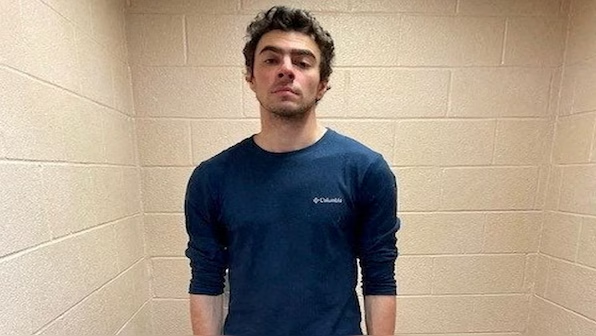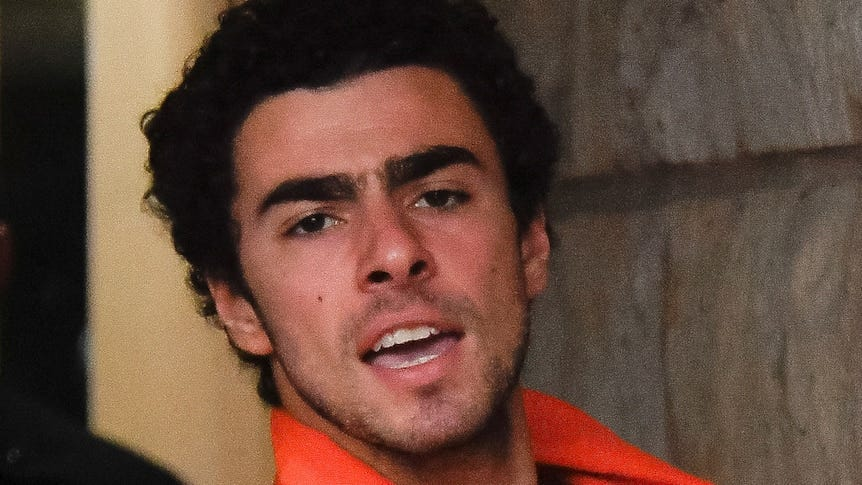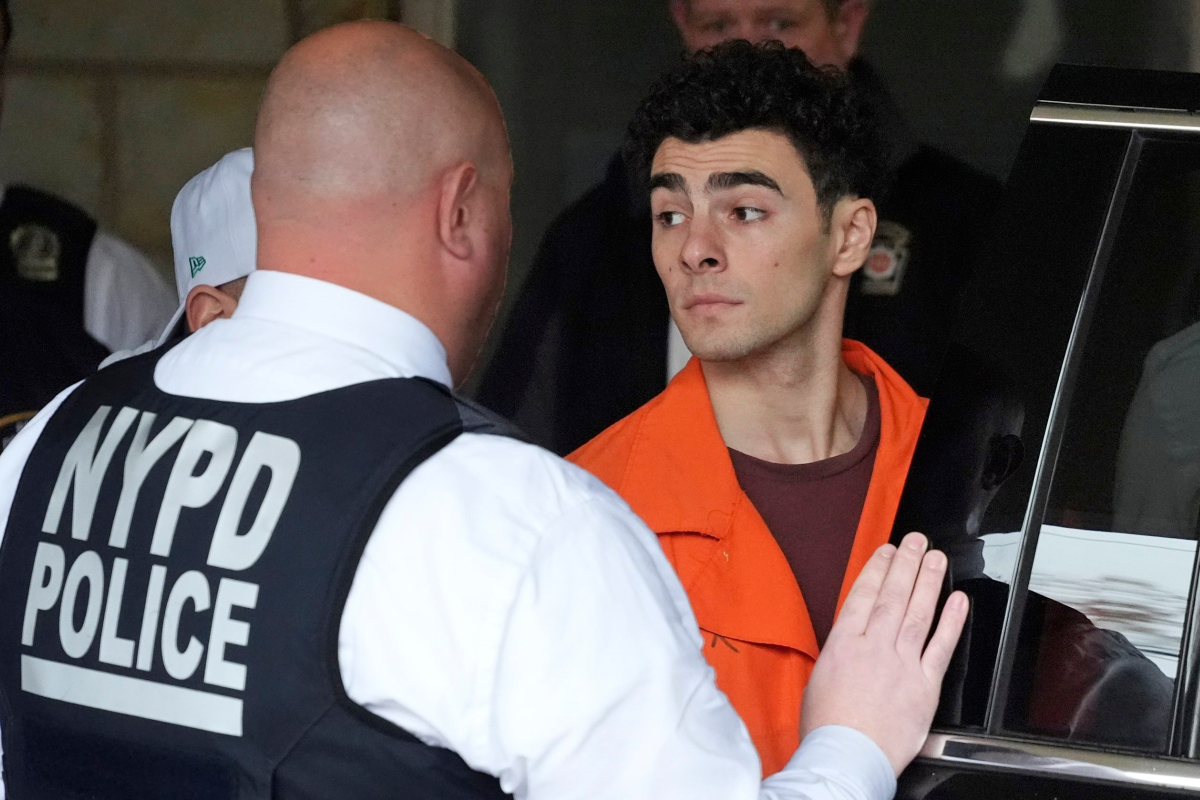Luigi Mangione’s shocking actions and subsequent incarceration have stirred widespread attention and debate. At just 26 years old, Mangione faces serious state and federal charges, including the murder of UnitedHealthcare CEO Brian Thompson in New York City on December 4.
His arrest and extradition to New York have triggered public fascination, not just for his alleged crime but also for his influence during his brief stint at the State Correctional Institution (SCI) in Huntingdon, Pennsylvania. According to Vaughn Wright, an incarcerated writer, Mangione’s time at SCI Huntingdon left a notable impact on both prison staff and inmates.
A Shift in Prison Guards’ Behavior
While at SCI Huntingdon, Mangione’s presence created ripples throughout the facility, particularly on D Block, which typically houses death row inmates. Vaughn Wright, writing for the Prison Journalism Project, observed an unusual shift in the behavior of guards during Mangione’s brief stay.
Guards appeared less oppressive, their demeanor seemingly influenced by Mangione’s notoriety. Wright speculated that the guards, aware of the media spotlight and Mangione’s influence, may have softened their usual approach in an attempt to benefit from his fame or avoid scrutiny.
Luigi Mangione was placed in a “turtle suit,” a padded garment designed to prevent self-harm, marking him as a high-risk inmate. Every time Mangione was escorted from his cell, the entire D Block went into lockdown, halting all prisoner movement.
Such measures underscored the heightened security surrounding his incarceration, yet they also drew significant attention from both the media and fellow inmates.
Read : Sweater Worn By Murderer of UnitedHealthcare CEO Sold Out Day After His Court Appearance
Wright noted that the guards’ behavior deviated from the norm during Mangione’s stay, suggesting a level of cautiousness and restraint that was rare in such a strict environment.
Read : Man From Madhya Pradesh Donates His Thigh Skin to Gift Mother a Pair Of Slippers
The attention Mangione attracted, both inside and outside the prison, may have pressured the staff to adjust their conduct. This temporary shift, though subtle, highlighted the power of public and media scrutiny in even the most controlled settings.
The Inmates’ Response to Luigi Mangione’s Presence
Mangione’s arrival at SCI Huntingdon did not go unnoticed by the prison population. His presence sparked a surge of interest and activity among inmates, who were both intrigued by his notoriety and empowered by the attention his case garnered.
Wright recalled a memorable incident when NewsNation reporter Ashleigh Banfield conducted a live broadcast outside the prison. Watching from their TVs, inmates began interacting with Banfield and her colleague Alex Caprariello, shouting from windows and using their cell lights to send signals.

This unprecedented unity among inmates reminded Wright of the camaraderie during major events, like the Philadelphia Eagles’ Super Bowl victory in 2018. The inmates relished the opportunity to make their voices heard, however briefly, through the lens of media coverage.
This moment of collective expression underscored the impact Luigi Mangione had on the prison community, even as administrators sought to suppress such displays.
Prison officials quickly intervened, warning inmates against further actions and threatening disciplinary measures, including solitary confinement. While the crackdown curbed the use of lights for communication, it could not completely silence the inmates.
According to Wright, subsequent media coverage outside E Block revealed that inmates continued to vocalize their thoughts, albeit more discreetly. The administration’s response highlighted the tension between institutional control and the inmates’ desire for self-expression, amplified by Mangione’s controversial presence.
The Broader Conversation Around Luigi Mangione’s Fame
Mangione’s case has ignited broader discussions about societal discontent and the dynamics of power. Experts have weighed in on the public’s fascination with figures like Mangione, who, despite their criminal charges, are often perceived as symbols of rebellion against systemic failures.
Dr. Cliff Lampe, a professor at the University of Michigan, explained that Mangione’s fame reflects a growing dissatisfaction with income inequality and corporate power. Social media platforms, he noted, serve as spaces where people can vent their frustrations and engage in dialogue, often using humor and admiration to address deeper societal issues.
Similarly, Susan Campbell, a distinguished lecturer at the University of New Haven, emphasized the role of public sentiment in elevating individuals like Luigi Mangione to folk-hero status.

In a world where many feel powerless against institutions like the health insurance industry, Mangione’s actions, however controversial, resonate with those who believe the system has failed them. Campbell’s analysis sheds light on the complex relationship between public outrage, systemic inequities, and the appeal of defiant figures who challenge the status quo.
Luigi Mangione’s case has also reignited debates about the American health insurance industry, a sector often criticized for its perceived lack of transparency and fairness.
The tragic murder of Brian Thompson has become a focal point for conversations about corporate accountability and the growing divide between corporations and the public they serve. While Mangione’s actions are inexcusable, the circumstances surrounding his case reveal deep-seated frustrations that cannot be ignored.
Luigi Mangione’s brief time at SCI Huntingdon and the subsequent media frenzy offer a unique glimpse into the intersection of crime, fame, and systemic critique.

His influence on prison guards and inmates alike highlights the far-reaching impact of public attention and media coverage, even within the confines of a correctional facility. At the same time, the public’s fascination with Mangione underscores the complexities of societal dissatisfaction and the search for agency in the face of perceived injustices.
As Mangione awaits his next court appearance, the conversations sparked by his case continue to evolve, reflecting the broader tensions within American society.
His story serves as both a cautionary tale and a lens through which to examine the challenges of corporate accountability, income inequality, and the role of media in shaping public perception. Whether viewed as a criminal or a symbol of rebellion, Mangione has undeniably left a lasting impression on those who encountered him, both inside and outside the prison walls.

